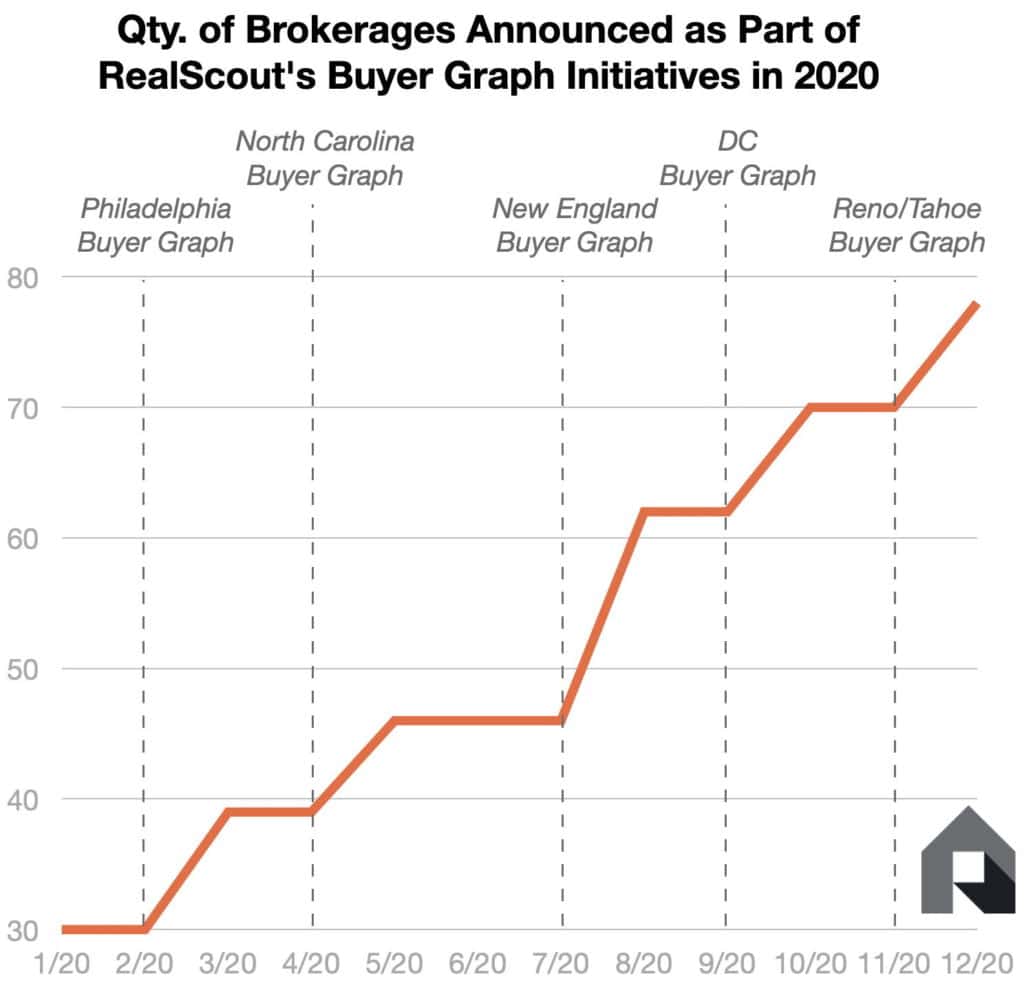How top brokerage leaders across the U.S. built a unique tech ecosystem to forge a path for long-term success

- By Andrew Flachner
- Q1: the implementation of NAR’s Clear Cooperation policy, a response to walled-garden listing data strategies that rose to prominence in 2019.
- Q2: the pandemic necessitated the deepening of remote home buying/selling, a massive acceleration of a trend already in motion for many years.
- Q3: Zillow’s announcement to harness its dominance with consumers to broker their own iBuyer transactions.
- Q4: a major new player entered residential real estate with CoStar’s acquisition of HomeSnap, providing the $34B company access to one of the biggest real estate audiences in the country.

Many of the developments in 2020 seek to bypass or disrupt the traditional brokerage ecosystem or business practices, despite the fact that the incumbent model is still the center-of-gravity of the industry as a whole.
As with almost any other technology experience, user engagement and data are inseparable in real estate. The key observation these leaders have made, is that there’s a big disconnect in real estate consumer data where the owner of the client relationship — the agent and brokerage — typically don’t have access or control of the client data that is generated. In other words, a consumer may work with an agent to buy or sell a home, but because they use third party technology, the agent has no visibility into the technology usage, let alone the ability to then add further value to the consumer through those insights.
This is another reason why a RealScout-facilitated data strategy resonates with brokerage leaders. Since the platform is designed for secure yet transparent handling of client behavior and preference data. Instead of giving away this critical asset to 3rd party portals, agents using RealScout can better understand and serve their clients. Brokerages and agents also have more visibility into their client base and therefore the overall health of their business.
While this strategy is immensely valuable to individual brokerages, there’s a broader opportunity that encompasses the brokerage ecosystem as a whole. Many of the developments in 2020 seek to bypass or disrupt the traditional brokerage ecosystem or business practices, despite the fact that the incumbent model is still the center-of-gravity of the industry as a whole. The simple yet powerful conclusion is that by doubling down on their strengths, brokerages and agents can unlock opportunities far greater and more tangible than some of the long-shot bets made in 2020.
A concrete example of this rallying cry occurred this year as 48 brokerages across 5 regions anchored “Buyer Graphs.” These initiatives brought together leading brokerages to build an open platform that securely and thoughtfully shares engagement data generated on RealScout. In doing so, the brokerages get a deeper insight into the market as a whole, deepen inter-brokerage collaboration, and ultimately deliver a more data-driven, sophisticated home buying experience to clients.
Nearly 50,000 agents are now part of these initiatives, providing access to insights and decision-making tools unavailable anywhere else.
These RealScout-powered initiatives have popped up in major metropolitan areas such as Washington DC, New England, San Francisco, Philadelphia, Orange County, and Denver/Northern CO. In fact, nearly 50,000 agents are now part of these initiatives providing access to insights and decision-making tools unavailable anywhere else.
Even the most unpredictable element of 2020, the global pandemic, was something these brokerages were better prepared for, thanks to these strategies. A best-in-class collaborative technology was exactly what agents and clients needed during remote transactions, and the results speak for themselves.
What’s striking about the strategy set forth by these brokerage executives is its simplicity and consistency. By focusing on the singular goal to provide the best possible first-party client experience — an experience that intimately involves client/agent collaboration — these leaders have been successful in responding to big industry trends, even larger macro-economic challenges, all the while elevating their ability to serve clients.
Although 2021 may prove to be just as unpredictable as 2020, the lesson learned from these leaders is that blindly chasing and reacting to trends is not the key to success. Instead, a simple, consistent, potentially contrarian vision, carefully formulated and boldly executed will protect against busts and accelerate booms.
